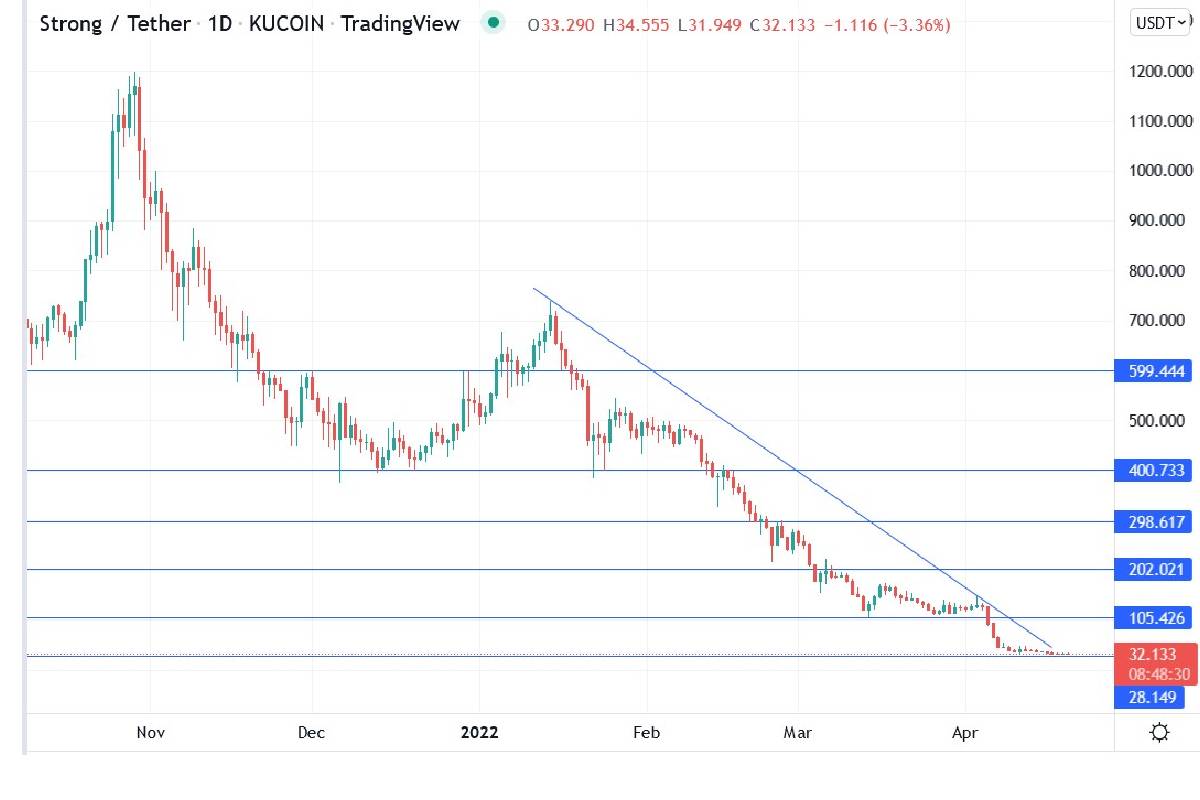Market Trends
Strong crypto price - The cryptocurrency market has experienced a significant surge in prices over the past year, with major cryptocurrencies like Bitcoin and Ethereum reaching record highs. This surge has been driven by a combination of factors, including increased institutional adoption, rising demand from retail investors, and the growing popularity of decentralized finance (DeFi) applications.
Finish your research with information from crypto to invest in.
Performance of Major Cryptocurrencies
- Bitcoin has increased by over 400% in the past year, reaching a market capitalization of over $1 trillion.
- Ethereum has also seen a significant increase in price, rising by over 1,000% in the past year and reaching a market capitalization of over $500 billion.
- Other major cryptocurrencies, such as Binance Coin, Solana, and Cardano, have also experienced strong growth in the past year.
Factors Influencing Price: Strong Crypto Price

The price of cryptocurrencies is influenced by a complex interplay of factors, including supply and demand, regulations, and institutional adoption.
Supply and Demand
The fundamental principle of supply and demand dictates that the price of a cryptocurrency will increase when demand exceeds supply, and vice versa. The supply of a cryptocurrency is determined by the number of coins that have been mined or created. The demand for a cryptocurrency is driven by factors such as its perceived value, utility, and potential for growth.
Remember to click a16z crypto to understand more comprehensive aspects of the a16z crypto topic.
Regulations
Government regulations can have a significant impact on the price of cryptocurrencies. Positive regulations, such as clear guidelines and legal recognition, can boost investor confidence and increase demand. Conversely, negative regulations, such as bans or restrictions, can lead to uncertainty and a decline in prices.
Discover more by delving into pi network cryptocurrency further.
Institutional Adoption
The adoption of cryptocurrencies by institutional investors, such as hedge funds and pension funds, can have a major impact on prices. Institutional investors typically have large amounts of capital to invest, and their participation in the cryptocurrency market can increase liquidity and legitimacy.
Investment Strategies
Diversification
Diversification is a key principle in crypto investing, reducing risk by spreading investments across different cryptocurrencies. This can help mitigate losses if one or more cryptocurrencies experience a downturn.Dollar-Cost Averaging (DCA)
DCA involves investing a fixed amount of money in a cryptocurrency at regular intervals, regardless of the price. This strategy aims to reduce the impact of price fluctuations and potentially increase long-term returns.High-Frequency Trading (HFT)
HFT is a strategy that involves making numerous trades in a short period, taking advantage of small price movements. This strategy requires sophisticated algorithms and high capital to be effective.Trend Following, Strong crypto price
Trend following involves identifying and investing in cryptocurrencies that are showing an upward trend. This strategy relies on technical analysis to determine market momentum.Value Investing
Value investing involves identifying undervalued cryptocurrencies with strong fundamentals, such as low market capitalization or a unique technology. This strategy seeks long-term appreciation potential.Future Outlook

The future of cryptocurrencies holds both promise and uncertainty. The market is rapidly evolving, and it is difficult to predict exactly what will happen in the years to come. However, there are some key factors that could shape the future of cryptocurrencies.
One of the most important factors is the development of regulation. Currently, the regulatory landscape for cryptocurrencies is fragmented and unclear. This has created uncertainty for investors and businesses, and it has hindered the growth of the market. However, there are signs that regulators are beginning to take a more proactive approach to cryptocurrencies. This could provide the clarity and certainty that the market needs to grow.
Another key factor that will shape the future of cryptocurrencies is the development of new technologies. The blockchain technology that underlies cryptocurrencies is still in its early stages of development. As the technology matures, it could open up new possibilities for cryptocurrencies. For example, it could make it possible to use cryptocurrencies for a wider range of transactions, or it could make it easier to develop new and innovative applications.
Challenges
Despite the potential for growth, the crypto market also faces a number of challenges. One of the biggest challenges is the volatility of cryptocurrencies. The prices of cryptocurrencies can fluctuate wildly, and this can make it difficult for investors to make sound decisions. Another challenge is the lack of liquidity in the crypto market. This can make it difficult to buy and sell cryptocurrencies, especially in large amounts.
Opportunities
Despite the challenges, the crypto market also presents a number of opportunities. One of the biggest opportunities is the potential for high returns. The prices of cryptocurrencies have increased significantly in recent years, and there is no reason to believe that this trend will not continue. Another opportunity is the potential for diversification. Cryptocurrencies are not correlated to traditional investments, so they can help investors to diversify their portfolios.
Comparison of Potential Returns and Risks
The following table compares the potential returns and risks of different cryptocurrencies:
| Cryptocurrency | Potential Return | Risk |
|---|---|---|
| Bitcoin | High | High |
| Ethereum | Medium | Medium |
| Litecoin | Low | Low |
